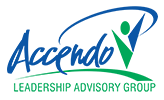
Stop the Meeting Mania: 7 Tips to help you have more productive meetings
Are your employees overwhelmed by meetings? Do they use adjectives like boring, long, and unproductive to describe them? If so, they are not alone. According to Meeting Fever’s, Time Spent in Meetings Statistics “on average executives spend nearly 23 hours a week in meetings, up 14% from a decade ago.” Often they are poorly run, badly timed, or ineffective. So how do you stop the meeting craziness? Here are 7 tips to help maximize meeting effectiveness which is critical for workplace productivity and collaboration:
- Have a hook. When establishing the meeting (e.g., email announcement, meeting invitation, etc.) give people a reason to care. Tell them what you will be covering, why its important, and what is going to happen if the objectives of the meeting are not achieved. This hook could be in place of the standard agenda. Clarity on what will be discussed and why sets expectations and helps all to prepare.
- Avoid “meeting soup”. There is no need to try to accomplish everything in one meeting. Be clear on what kind of meeting it is so attendees will understand what level they will be expected to play at. Is it a daily check-in meeting or strategy meeting? Are we reciting tactics or brainstorming for new ideas/solutions? Nothing is worse than confusing or mixing the two as the length of time and input required are different.
- Match the time frame to the type of meeting. Daily check-in and tactical meetings should be short in nature, usually 15 minutes or less for the former and no more than 60 to 90 minutes for the latter. Whereas strategy meetings should be less frequent and longer, usually about 2 to 3 hours to allow for brainstorming and the flow of ideas. Once the type of meeting is decided, stay focused on the task, and then don’t run past the expected timeframe.
- Lead with the appropriate mindset. We all have different gifts. Some leaders are creative, think big picture and are talented innovators. These executives are perfect to lead quarterly offsites or strategy meetings. While others are specialists in discerning priorities, leading execution and/or inspiring others once the strategy has been set. The point here is to match the appropriate leader with the mindset needed to maximize that particular meeting type or objective. Don’t try to lead a meeting that doesn’t match your particular strength. Strong leaders know how to regulate their talents, knowing when to step aside and let others take the reins.
- Invite the right people. Once you are clear on the purpose, type, and anticipated outcome of the meeting, be sure to invite the correct participants. There is nothing more time sucking and annoying than participating in a meeting that there was no need to attend. Often, in our need to be inclusive we invite everyone vs. those that are just relevant to the discussion. Keep meetings as small as possible to enhance effectiveness. Avoid the temptation to over-invite.
- Encourage participation. Once you have the correct attendees, it is important to create an environment where all participants feel comfortable to express their opinions and ideas. As the leader it is your role to encourage active participation and ensure that everyone has an opportunity to speak. And remember, great leaders listen with big open ears, resisting the temptation to do most of the talking.
- End meetings strong. After discussing we must decide and disseminate. Taking the last 5 minutes of a meeting to restate agreed upon items ensures alignment. How often do we get to the end of a meeting only to find out that the next steps have been interpreted differently with some marching off to share info and others withholding it. Teams must be on the same page on what is to be communicated, by when, and to who.
By incorporating the 7 tips above you can create a more efficient and productive meeting environment, leading to better collaboration and decision-making in the workplace. Employ them now and start having better meetings!
Partial Source: The 6 Types of Working Genius, Patrick Lencioni
